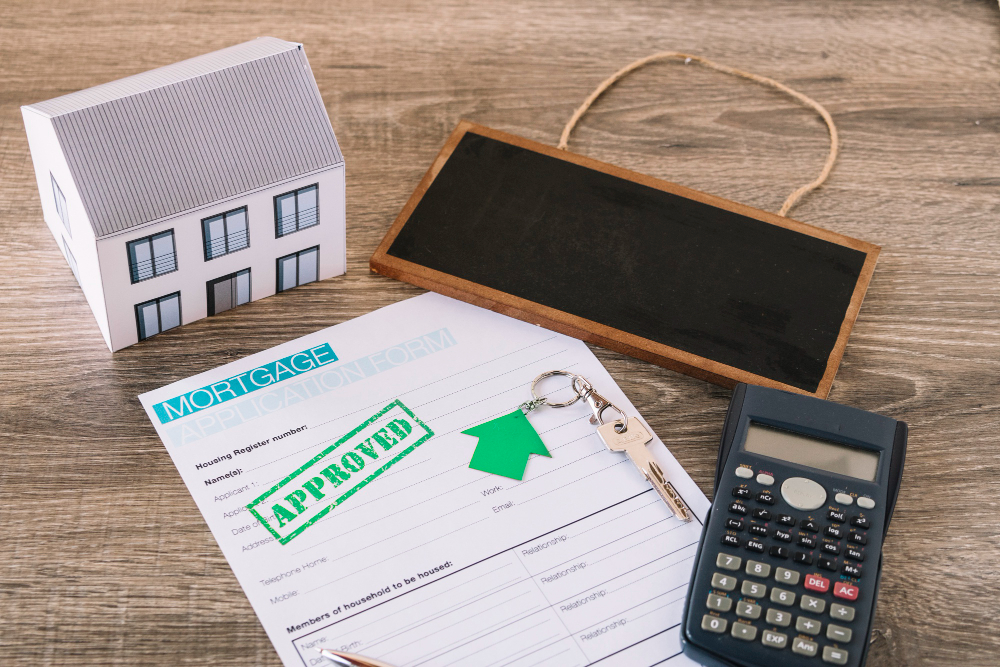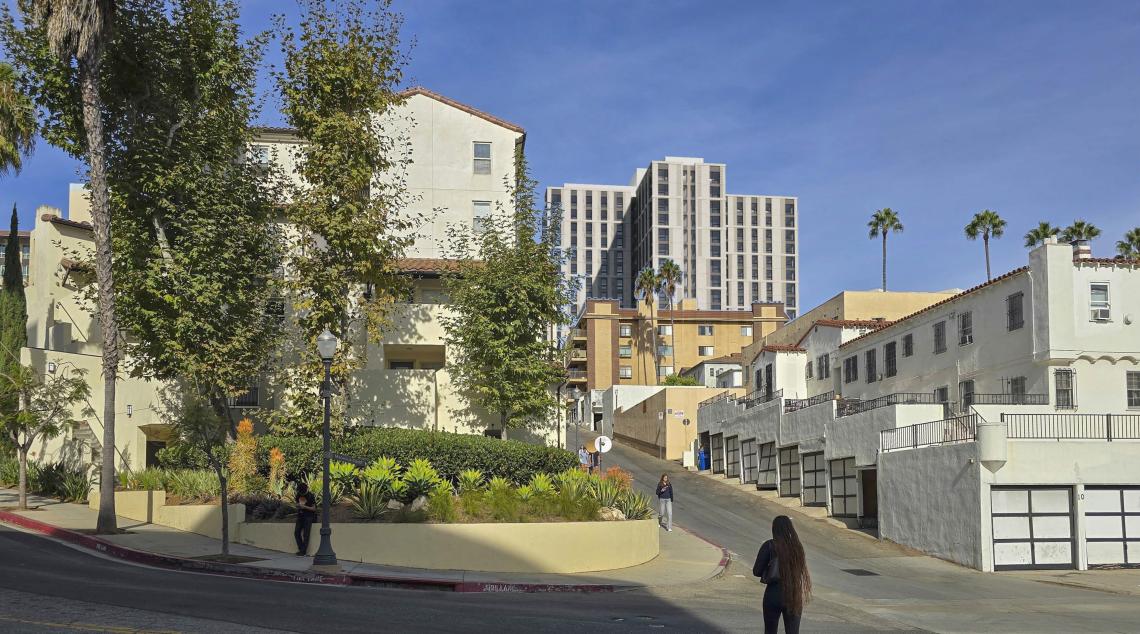Step-by-Step Guide to Submitting an LA County Entitlement Application
Planning a development in Los Angeles County involves more than great design or solid financing—you also need the right approvals. One of the biggest milestones is securing entitlements, the official go-ahead from the County (or City) that allows your project to move forward.
Table of Contents
ToggleWithout entitlements, you can’t apply for permits or start construction. The process can feel overwhelming because it often involves multiple agencies, community input, and sometimes environmental reviews. Each step takes careful planning and coordination.
That’s where JDJ Consulting Group steps in. We work with developers, property owners, and investors to simplify entitlement applications, cut down delays, and build the right strategy from the start.
In this guide, we’ll break down the process step by step, highlight key requirements, and share tips to help you avoid common roadblocks in LA County.
⏱️ Entitlement Timeline & Costs in LA County
Source: JDJ Consulting internal data, LA County Planning Fees (2025)
Understanding Entitlements in LA County: Definitions, Scope & Importance
Before diving into forms and filings, it’s essential to understand what “entitlements” mean in Southern California.

What is a land use entitlement?
An entitlement is legal approval to use a property in a way that isn’t automatically allowed under its existing zoning. Some projects are “by right”, meaning you can build if you meet the zoning code. But many developments—especially larger, mixed-use, or high-density ones—require a formal entitlement.
Common types of entitlements include:
- Conditional Use Permits (CUPs): For uses not automatically allowed but permitted if conditions are met.
- Zone Changes: Requests to change the property’s zoning designation.
- Variances: Exceptions to specific rules (such as height limits or setbacks).
- Subdivision Approvals: When dividing land into multiple lots.
- Density Bonuses: For projects that include affordable housing under California law.
Why entitlements matter in LA County
Entitlements set the rules for what you can and cannot build. They affect project costs, timelines, and feasibility. LA County and its many cities have additional rules such as specific plans, overlay zones, and design review boards.
If you move ahead without securing entitlement, your project risks rejection during permitting. In short, entitlements are the legal foundation of your project.
Pre-Application Phase: Preparing Before You File
Getting ready before you walk into the planning office can save months of delay. The pre-application phase is about research, due diligence, and assembling the right team.
Site feasibility & due diligence
Every project starts with understanding the land. This means evaluating whether the site is suitable for your intended use.
Here are the key steps:
- Review zoning maps, general plan designations, and overlay zones.
- Check for natural constraints: flood zones, fire hazard areas, slope restrictions.
- Look for recorded easements or encumbrances.
- Confirm infrastructure availability: water, sewer, power, and road access.
At JDJ Consulting, we often prepare a site feasibility report. It gives clients a clear view of potential red flags before they commit resources.
Pre-application meetings & consultations
Most cities and LA County itself offer pre-application meetings. These are informal sessions with planning staff where you present your concept and receive feedback.
Benefits of pre-application meetings include:
- Identifying issues early.
- Learning which departments will review your project.
- Clarifying whether environmental studies may be required.
- Reducing the risk of an “incomplete” letter later on.
Tip: Bring concept sketches, a draft site plan, and a clear project narrative. The more professional your materials, the better the feedback.
Preparing the application materials checklist
Submitting an entitlement is paperwork-heavy. Each jurisdiction has its own forms, but most require a similar package.
Here’s a table that breaks down common application materials for LA County projects:
| Required Item | Purpose |
| Base Application & Owner Form | Confirms ownership and official request for entitlement |
| Legal Description & Title Report | Verifies property boundaries and ownership history |
| Site Plan & Elevations | Shows how the project fits the site, including layout and height |
| Environmental Documentation (CEQA) | Addresses environmental impacts and compliance requirements |
| Traffic & Infrastructure Studies | Ensures project impact on roads, drainage, and utilities is acceptable |
| Community Outreach Plan (if required) | Documents efforts to notify and involve local stakeholders |
This checklist is not exhaustive, but it’s a strong starting point. At JDJ, we tailor the list to your project type, whether it’s a single-family subdivision or a mixed-use commercial development.
Filing the Entitlement Application
Once you’ve done your homework and prepared your documents, the next step is filing your entitlement application. This is the moment where your project enters the public system, and it’s critical to get it right the first time.
Choosing the correct application package or form
Every project has its own requirements. A subdivision will need a different application than a variance or a zone change. In LA County, most applicants start with a Base Application and then add supplements depending on the entitlement type.
- If you’re in unincorporated LA County, your application goes to the County Department of Regional Planning.
- If your site is inside a city, like Los Angeles, you’ll work with that city’s planning department instead.
At JDJ Consulting, we help clients identify exactly which entitlements apply, so you don’t waste time filing the wrong package.
Organizing, assembling, and formatting your submittal
A well-prepared package makes a big difference. Planning staff appreciate clear, organized submittals that are easy to review.
Here are best practices:
- Use a table of contents or index for larger packages.
- Separate drawings, studies, and narratives into labeled sections.
- Ensure digital copies are properly named and formatted.
- Double-check signatures and notarized documents before filing.
Initial screening and completeness review
After submission, staff will perform a completeness check. By law, they usually have 30 days to decide whether your application is “complete.”
If something is missing, you’ll receive an “incomplete letter” with instructions on what to fix. Each round of revisions adds time. That’s why JDJ Consulting focuses heavily on pre-screening—so your package passes the first time.
Internal Review & Inter-Departmental Referrals
Once accepted, your application is routed to different departments for technical review. This is where specialists dig into the details.

Routing to internal departments
Expect your application to touch several desks, including:
- Public Works: Reviews road access, drainage, and infrastructure.
- Fire Department: Checks emergency access and fire safety compliance.
- Transportation: Evaluates traffic impacts and parking requirements.
- Building & Safety: Ensures plans align with building codes.
Each department may request clarifications or revisions.
Environmental review under CEQA
If your project is discretionary, the California Environmental Quality Act (CEQA) comes into play. Depending on the scale, this may mean:
- Exemption: For projects too small to trigger review.
- Negative Declaration (ND): When no significant impacts are found.
- Mitigated Negative Declaration (MND): Approval with specific conditions.
- Environmental Impact Report (EIR): A full study for larger, complex projects.
CEQA reviews can take months, sometimes years. JDJ helps clients anticipate which level applies so they can budget and schedule accordingly.
Revisions and responses to comments
Departments will send written comments. These can include requests for updated plans, additional studies, or design modifications. Timely responses keep your project moving.
💰 LA County Entitlement Cost Estimator
Public Notification, Hearings & Decision Process
The entitlement process is not just technical—it’s also public. Neighbors, community groups, and decision-makers all have a voice.
Public noticing requirements
Most projects must notify nearby property owners and sometimes post notices on-site. Typical methods include:
- Mailing notices to owners within a certain radius.
- Publishing in a local newspaper.
- Posting a large sign on the property itself.
Community engagement and outreach
Getting the community on board early reduces the chance of last-minute opposition. JDJ often helps clients prepare community presentations or host informational meetings.
Benefits of early outreach include:
- Building goodwill with neighbors.
- Reducing resistance at hearings.
- Demonstrating good faith to decision-makers.
Hearings and decision-makers
Depending on your application, decisions may rest with:
- Planning Commission (most discretionary approvals).
- Zoning Administrator (smaller-scale cases).
- City Council or County Board of Supervisors (appeals or major cases).
Decisions may include approval, approval with conditions, denial, or a request for more information.
Appeals and final action
If approved, there’s usually a short appeal window (around 10 days). If no appeals are filed, your entitlement becomes final. Likewise, if an appeal is filed, your case may move to a higher body for review.
Here’s a table that gives a quick snapshot of timelines and costs for typical entitlement processes in LA County:
| Entitlement Type | Typical Timeline | Approximate Fees (Excluding Studies) |
| Variance | 6–9 months | $10,000–$15,000 |
| Conditional Use Permit (CUP) | 9–12 months | $12,000–$20,000 |
| Subdivision (Tentative Map) | 12–18 months | $20,000–$40,000 |
| Zone Change | 12–24 months | $25,000–$50,000+ |
| Environmental Impact Report | 18–36 months (or longer) | $50,000–$200,000+ |
Note: Costs vary depending on location, consultants, and project complexity. JDJ Consulting helps clients budget realistically to avoid surprises.
Post-Approval Steps & Implementation
Securing an entitlement approval is a major milestone, but the work doesn’t stop there. The approval usually comes with conditions. So your project must clear these before moving into construction.
Condition clearance and implementation
Every approval includes conditions of approval. These are the requirements you must meet before pulling building permits. These can range from landscaping standards to parking layouts or design modifications.
Typical conditions may include:
- Adding trees or landscaped setbacks.
- Installing traffic improvements or signals.
- Providing a specific number of affordable units.
- Meeting stormwater or drainage requirements.
At JDJ Consulting, we help clients track, document, and clear these conditions so nothing falls through the cracks.
Transitioning to permits and building approvals
Once conditions are satisfied, you’ll move into the building permit process. This is a separate step handled by LA County Building & Safety (or LADBS for projects in the City of LA).
The permit process usually involves:
- Application filing – submitting your building plans.
- Plan check – detailed technical review of your drawings.
- Permit issuance – once corrections are resolved and fees paid.
- Inspections – verifying work complies with codes and approvals.
- Final sign-off – leading to a Certificate of Occupancy.
Monitoring, compliance, and inspections
Throughout construction, inspectors will visit to confirm compliance. If conditions from the entitlement approval are tied to construction, they’ll also be verified. This is where JDJ often provides ongoing support. It coordinates between contractors and agencies until the final certificate is in hand.
❓ Quick Quiz: Entitlement Knowledge
Which entitlement is required for a project that needs an exception to a height limit?
🚀 Ready to Get Your LA County Entitlement Approved?
JDJ Consulting guides you step-by-step to avoid delays, pass CEQA review, and secure approvals faster.
Contact JDJ Consulting TodayTypical Challenges, Delays & Best Practices
Even the best-prepared projects can hit bumps in the road. Knowing the common pitfalls helps you prepare.
Common pitfalls and delays
- Incomplete submittals: Missing documents or signatures can delay reviews.
- Environmental issues: CEQA studies often take longer than expected.
- Community opposition: Neighbors can appeal approvals, adding months.
- Jurisdictional confusion: Projects straddling city/county lines face added complexity.
- Underestimated costs: Fees for traffic or infrastructure studies can escalate quickly.
Best practices to keep projects moving
- Start with strong due diligence. Identify zoning, environmental, and infrastructure issues early.
- Engage planning staff upfront. Pre-application meetings can save months later.
- Stay organized. A clean, complete package helps staff process faster.
- Invest in community outreach. Early communication reduces opposition.
- Use expert consultants. Land use consultants streamline responses and coordinate teams.
When to bring in a consultant or land use attorney
Not every project needs a consultant or attorney, but certain situations benefit from it:
- Large or complex projects requiring EIRs.
- Cases with strong community opposition.
- Projects needing zone changes or multiple entitlements.
- Appeals or litigation risks.

Case Study: How JDJ Consulting Helped a Mixed-Use Project Navigate Entitlements
To see how this plays out in the real world, let’s look at an example.
Project background
A client approached JDJ with plans for a mixed-use development in unincorporated LA County. The site was zoned for low-density commercial, but the client wanted to include housing units above ground-floor retail.
Key hurdles
- Zoning mismatch: Required a zone change and a CUP.
- Community concerns: Neighbors worried about parking overflow.
- Environmental review: Triggered a Mitigated Negative Declaration.
JDJ’s role
- Conducted site feasibility research to confirm potential hurdles before filing.
- Prepared and organized the entitlement package, ensuring it passed the first completeness check.
- Facilitated community outreach meetings, presenting parking solutions and design changes.
- Coordinated responses to departmental comments, including Public Works and Fire.
- Managed the CEQA process, reducing the timeline by three months.
Outcome
- Entitlements were approved by the Regional Planning Commission with conditions.
- JDJ oversaw condition clearance, ensuring affordable housing and parking measures were documented.
- The project moved into building permits without delays caused by appeals.
Lessons learned
This case highlights why having an experienced consultant matters. By anticipating community concerns and organizing submittals, JDJ saved the client both time and money.
Frequently Asked Questions (FAQ) on LA County Entitlement Applications
1. How long does the entitlement process take in LA County?
Small projects may take six months, while larger ones can last years. Projects with Environmental Impact Reports (EIRs) usually take the longest.
2. What are the main cost factors in an entitlement application?
Key costs include:
- Filing and processing fees
- Consultant studies (traffic, soil, environmental)
- Legal or community outreach expenses
- Infrastructure improvements tied to conditions
3. Can I submit multiple entitlement requests at the same time?
Yes. Many developers combine requests like a subdivision map with a CUP to save time. It requires careful planning and coordination across departments.
4. What happens if my entitlement application is denied?
You can appeal to the Planning Commission or Board of Supervisors. If appeals fail, redesigning or scaling the project is often the next step.
5. Do entitlement approvals expire?
Yes. Most expire within two to three years if no progress is made. You can request extensions before deadlines.
6. How much does an entitlement application cost in LA County?
Simple permits may cost a few thousand dollars. Complex mixed-use or subdivision projects can run into the tens or hundreds of thousands.
7. Why is community outreach important in entitlement projects?
Neighbors and local groups often influence approvals. Good outreach builds trust, reduces objections, and avoids costly delays.
8. What documents are usually required in the application?
Typical documents include:
- Site and floor plans
- Environmental or traffic studies
- Legal descriptions of property
- Application forms and fees
9. What role does CEQA play in entitlement applications?
CEQA (California Environmental Quality Act) reviews environmental impacts. Some projects qualify for exemptions, while others require full EIRs.
10. Can entitlement approvals be transferred to a new property owner?
Yes. Most entitlements “run with the land,” so new owners inherit them. However, some may require formal transfer or notice to the county.
11. How do zoning codes affect entitlement success?
If your project doesn’t fit current zoning, you’ll need variances or zone changes. Aligning with existing zoning speeds up approvals.
12. What are the most common entitlement requests in LA County?
The most common include conditional use permits, variances, subdivisions, and zone changes.
13. Are public hearings always required?
Not always. Small projects may be handled administratively. However, larger ones often require Planning Commission or Board hearings.
14. What’s the difference between planning approvals and building permits?
Entitlements grant land-use rights. Building permits come later and cover construction details like safety, design, and engineering.
15. How can a consultant help with entitlement applications?
Consultants manage paperwork, coordinate with agencies, handle outreach, and anticipate issues. They save time and reduce risks for developers.
Conclusion & Next Steps
Submitting an entitlement application in LA County is more than filling out forms. It’s about timing, strategy, and knowing how to work with the system. Each step, from early research to final hearings, can either clear the path or create blocks.
The advantage? You don’t have to figure it out alone. At JDJ Consulting, we guide developers and property owners throughout the entitlement process. Our team helps you avoid delays, stay compliant, and keep your project moving forward.
If you’re ready to take the next step with your project, let’s connect. Together, we’ll design a clear plan to get your entitlement approved. So you can spend less time worrying about paperwork and more time building your vision.






